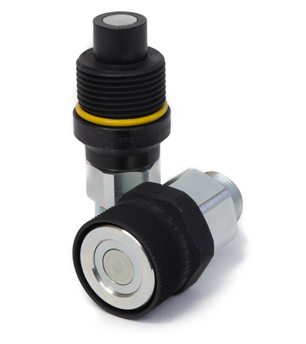I like the flat-face but they are all but impossible to hook up with any pressure in them. I have them on my mini-x and I like that they don't leak much but hate that they can't be connected without loosening the fitting. On my excavator, I would call them anything but "quick" lol.
One of my pet peeves in life. You think we have it all figured out?
How did this engineering discussion go,
Boss, we need a new quick connection for all these implements.
Engineer: no problem, what is the spec.
Boss, Well they will be used on high pressure hydraulic lines. They shouldn't leak - EVER, and they should be quick.
......Months later
Engineer - what do you think of the new design?
Boss, For some reason I can't put them together.
Engineer - there must be pressure in the line, just go find some wrenches and loosen the fitting until you can put them together. Grab a rag to, you will get oil everywhere.
Boss, this was supposed to be for use on high pressure lines and quick, OK, I have the pressure gone, they still drip oil on my hands when connecting.
Engineer, you were serious when you said they shouldn't leak?
And it has been an issue for decades.
Next time you are sitting at a red light with not a soul in sight, remind yourself, we aren't even close to figuring it out yet.



